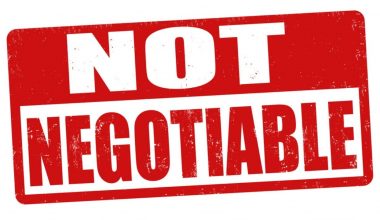Sales and marketing are becoming more complicated as technology develops. Performance development and enhancement are the goals of an enablement process. This article will describe what “enablement” and “enablement manager” are. We will also discuss tools for sales enablement and enablement training.
Enablement
Enablement is the practice of giving revenue-generating teams the knowledge, materials, and resources required to boost the efficiency and effectiveness of client growth and acquisition. Most businesses only include sales-related enablement, which is a major mistake given that sales only focus on one aspect of the customer experience. Some businesses may broaden their scope to include both customer success and sales, but the dilemma remains: sales and customer success only cover two aspects of the customer journey.
In order to optimize the complete customer journey, the ideal enablement team works with all revenue-generating departments, including sales, customer success, marketing, and partnerships. Enablement improves the performance of all revenue-generating teams in a business by assisting with the following functions:
- Coaching
- Content management
- Ongoing training
- New hire onboarding
Sales Enablement
At its core, the idea is simple: sales enablement is giving your sales team the tools, technology, content, and other corporate strategy resources it needs to do well. Even the best golfers in the world may improve their scores and rankings with better clubs, better training, and more information about the courses they play. When it comes to sales enablement, a similar idea is relevant since even the most skilled salespeople may benefit from the right support and framework.
In the digital world of today, B2B sales enablement solutions are often designed with the buyer in mind. This is because the main goal is to help sellers find the right buyers and keep them engaged throughout the customer journey. It’s about getting rid of anything that could get in the way of easy interactions and a smooth buying process.
It’s understandable why firms all around the world are giving sales enablement priority, considering that selling is probably more difficult than ever before due to inherent barriers.
Why Is Sales Enablement Important?
Some of the fundamental reasons for the importance of sales enablement have already been discussed. Sales enablement helps salespeople do their jobs better and brings in more revenue, but it’s a lot more than that.
- Sales enablement encourages your sales team to get thorough and consistent training so that everyone is on the same page and is always up-to-date on the latest trends, products, and technologies. This helps you stay ahead of the competition.
- It also encourages your sales team to have a strong culture of customer service, which lets them adapt their approaches to meet the needs of each customer. In turn, you are more likely to make a sale and also build a group of loyal customers and a good name for your business.
- However, it helps salespeople do their jobs better and make more money. Since they are happier and more successful, they are more likely to stay. When it comes to sales, retention rates are very important and will definitely help you in the long run.
Enablement Manager
It is the job of an enablement manager to create and roll out programs, techniques, and initiatives that assist my sales teams in doing their main jobs. This helps them sell more products and make more money.
- The duties of the enablement manager might differ widely from company to company and are mostly based on the structure and size of that team.
- The job of many sales teams is to sell, and the function of the sales operations team is to assist them in doing so. Sales operations teams support salespeople in becoming more productive, successful, and efficient.
- By participating in daily activities, the enablement manager can assist the sales team in achieving its objectives. By taking part, the SE can help build support for initiatives, which will lead to better results and more success.
- A sales manager’s job is to do the tactical tasks that help sales teams do their jobs and make sure that their efforts are in line with the company’s strategic goals. By doing this, they help the overall growth of sales.
- You can’t say enough about how important an enablement manager is. As a member of the sales team, they are in a great position to help improve processes and bring in more money. Even though they can’t solve every problem, their work is essential to growth as a whole.
Tools for Sales Enablement
A sales enablement tool connects your content, marketing, and sales cycles. These tools let you track analytics and content usage to understand what works and what doesn’t throughout the sales process, from beginning to end.
It’s difficult to give examples of sales enablement tools because there are so many and they’re all so different. You can search for tools based on their specifications, sector, or suitability for use with different kinds of sales enablement solutions. The following are the top sales enablement tools available today.
#1. Ambition
Ambition is a sales enablement application that uses visuals to train and motivate salespeople. It helps teams improve in-person and remote sales performance. Ambition helps sales managers streamline onboarding and customize training for experienced salespeople. It supports sales training, CRM integration, communication tools, and a dialer.
#2. Boomerang
Do you spend all your effort on email outreach? Boomerang makes email marketing art. It maximizes response rates by using data and analytics on email open rates. Boomerang monitors response rates and opens to resend emails at optimal times. It integrates with Google Suite and Outlook to support email templates, marketing, and calendars.
#3. Cloze
Cloze will revolutionize your client communication if you use email, social media, and LinkedIn. It organizes your customer interactions into one easy-to-navigate page. Cloze eliminates data entry and encourages holistic client follow-up. It also tracks client-shared documents, making it easy to remember what was shared and when.
#4. Datanyze
Datanyze may be right for you if you know your ideal client but need help finding them. Its “eyeball” algorithm scans a client’s public information, including their website, and provides pertinent qualifications. Revenue, workers, and solutions are listed. B2B sellers who do research love it.
#5. Emissary
Sales enablement tools are not the same. The Emissary favors human interaction over AI. Through the Emissary network, you can obtain real-time advice from high-level executives from every industry on how leaders think and how to close transactions. Emissary is for you if your salespeople have ever complained, “I simply wish I knew what they were thinking.”
Enablement Training
The whole point of enablement training is to make your workers more efficient and productive. It means training your sales team to give them the skills they need to sell your product or service well. Enablement professionals make sure the teams they work with have the materials, tools, skills, and processes they need to reach the organization’s goals by giving them training and content.
How to Launch an Enablement Training Program
Although there are many ways to start a program for enablement training, these steps have worked for many businesses in a range of industries.
#1. Make Sure You Have a Dedicated Sales Enablement Team
The sales enablement process of today is too complicated to be a part-time endeavor. Your firm won’t get the rewards of the process, for instance, if you merely select a sales manager and instruct them to supervise sales management while still performing their other duties.
HubSpot’s 2020 survey found that 65 percent of sales leaders who beat their revenue goals have a person or team committed to sales enablement. It’s important to put money into this important area.
#2. Know Your Goals
A sales enablement team can perform a variety of things, and in order to succeed with your enablement training program, you must first understand the challenges that your team is attempting to solve.
How do you decide on a certain focus? Consider your sales team’s objectives and how the team can help affect these key performance indicators (KPIs). What most irritates your sales team? An enablement team might be able to address that. Alternatively, consider where your sales force spends the most time for the least amount of benefit. Enablement can investigate ways to eliminate or streamline this process.
It can be tempting to set an ambitious target that will doom the team to failure if you’ve never run an enablement training session before. Instead, use this department to solve specific issues and allow it to expand as needed.
#3. Coordinate Sales and Marketing
How successfully do your marketing and sales teams collaborate? There could still be silos separating the two teams even if you don’t have a sales enablement department.
The first step is to discuss what each department needs from the other. To ensure that marketing knows precisely when to pass a lead along to sales, you can, for instance, tighten the lead-scoring structure. Marketing is certain there will be a good possibility of a sale because, for example, sales may promise to follow up on leads within a certain time limit.
The team can also work on improving specific processes so that each team member can move quickly through the marketing and sales process with each lead.
When you’ve come to an agreement, think about documenting it in writing. In this manner, everybody is in agreement and can hold one another responsible for upholding their obligations.
#4. Create Strategic Content to Support Sales and Marketing
A sales enablement team’s main responsibilities are content generation and organization. It is critical that the material has a purpose and connects with the company’s aims.
The team can begin by gathering all of the current marketing and sales materials in one place. Bringing everything together in one place makes it easy to access and identify where the gaps are.
The sales enablement team can then develop extra effective and engaging resources, such as onboarding training and customer path maps. You may optimize the benefit these materials bring to the many teams in your business by keeping them structured and centrally accessible.
#5. Roll Out Improved Processes and New Content
As enablement improves procedures and develops new sales materials, these assets must be distributed to the team. This is when the training component of enablement comes into play.
As part of the training, it may be necessary to make sure that everyone is aware of where to find and how to use the sales and marketing materials. Altering the training procedure or making improvements to the new hire onboarding process are other options.
That information will need to be shared as your team prepares fresh materials for sales reps. It’s helpful to come up with a plan for how to roll out this training in a way that isn’t too distracting and is easy to understand and remember.
Using training approaches and making knowledge immediately practical are two strategies to enhance buy-in and adoption of new concepts.
What Is the Difference Between Excellence and Enablement?
Centers of Excellence are great for solving very specific and limited problems, but they tend to make people see things in a narrow way. Centers for Enablement, on the other hand, develop much more comprehensive solutions and best practices to cope with a wide range of difficulties, but they may not be best suited to relatively narrow conditions.
What Are 2 Concepts of Enablement?
The enablement idea had many parts, such as contributing to the therapeutic relationship, taking the person as a whole into account, making learning easier, highlighting the person’s strengths, involving and supporting the person in making decisions and opening up new possibilities.
What Is the Difference Between Empowerment and Enablement?
Empowerment is a long-term form of support that helps someone become more independent (and eventually capable of helping others), whereas enablement is only quick assistance to get things done.
What Is the Key Employee Enablement?
Employee enablement is a strategic practice that gives workers everything they need to do their jobs to the best of their abilities and creates an environment where they can do their best work.
Is Enablement a Good Career?
A career in sales enablement can be rewarding and exciting for those who want to make a difference and help others. Fostering continuing learning and persistently looking for possibilities for professional development and progress are crucial for genuinely thriving at any job.
References
Related Articles
- Sales Enablement for your Sales Team: Manager’s Job Description & Salary 2023 (Updated!)
- PRODUCT MARKETING STRATEGY: Overview, Examples, Job Description (+ free courses)
- How B2B eCommerce Platforms Enable Sales
- How To Be The Best Manager: Free Tips And Easy Steps To Follow
- 29 Best Productivity Tools In 2023






